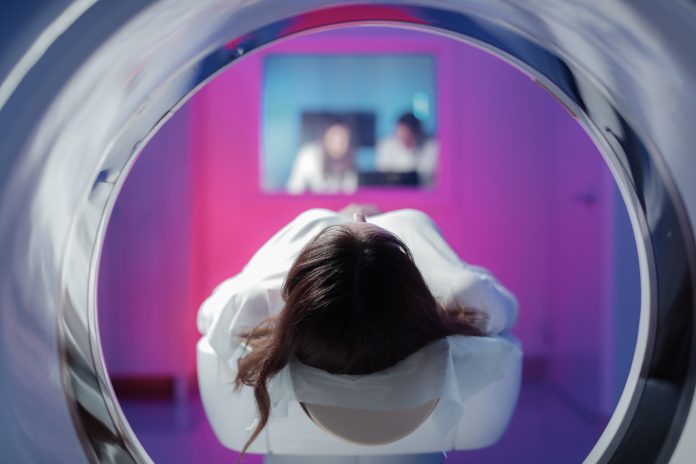
A new computed tomography (CT) technology, first introduced to the clinic last year, has demonstrated superior detection of bone disease associated with multiple myeloma at lower radiation doses than conventional CT, according to a new study published in Radiology, a journal of the Radiological Society of North America (RSNA).
The new technique, called photon-counting detector CT, converts individual x-ray photons into an electric signal. Aided by artificial intelligence (AI) noise reduction, photon-counting detector CT can decrease the detector pixel size and improve the image’s spatial resolution.
According to study lead author Francis Baffour, M.D., diagnostic radiologist at the Mayo Clinic in Rochester, Minnesota: “Additionally, photon-counting CT has demonstrated much better dose efficiency than standard CT, which allows for acquisition of ultra-high-resolution images of large areas of the body.”
CT technology has become a vital diagnostic imaging in the clinic and has undergone a number of technological advances over that time, many focused on lowering the radiation dose exposure to patients. Yet many methods to reduce the amount of radiation dosing to patients also present problems in terms of image resolution.
Photon-counting detector (PCD) CT has been touted as the next wave of clinical CT. It lowers the radiation exposure of patients via new energy-resolving x-ray detectors, with mechanisms that differ substantially from those of conventional energy-integrating detectors. According to a 2018 research study “Photon-counting CT: Technical Principles and Clinical Prospects” also published in Radiology, “Photon-counting CT detectors count the number of incoming photons and measure photon energy. This technique results in higher contrast-to-noise ratio, improved spatial resolution, and optimized spectral imaging. Photon-counting CT can reduce radiation exposure, reconstruct images at a higher resolution, correct beam-hardening artifacts, optimize the use of contrast agents, and create opportunities for quantitative imaging relative to current CT technology.”
The prospect of using this technology for whole-body, low-dose scans led Baffour and colleagues to apply the technology as a method for the detection of bone disease that characterized by areas of bone destruction known as lytic lesions, which is a condition found in approximately 80% of multiple myeloma patients.
To measures its effectiveness in detecting the condition, the team compared photon-counting detector CT with conventional low-dose, whole-body CT in 27 multiple myeloma patients, median age 68 years. The patients underwent whole-body scans with both types of CT and two radiologists compared the images.
In addition, the investigator applied a deep learning AI technique developed at Mayo Clinic’s CT Clinical Innovation Center that reduced the noise in the photon-counting images, which can result in pixel value changes and grainy images. The photon-counting detector CT combined with deep learning noise reduction demonstrated improvement in visualization and detected more lesions relative to conventional CT.
“We were excited to see that not only were we able to detect these features of multiple myeloma disease activity more clearly on the photon-counting scanner, with deep learning de-noising techniques that allowed us to generate thinner image slices, we were able to detect more lesions than on the standard CT,” Baffour said.
Potential follow-on work suggested by these new findings include studies on patients with multiple myeloma precursor states to see if photon-counting detector CT finds bone lesions that would upstage these patients to active multiple myeloma; and other potential applications for low-dose CT such as in pediatric or pregnant patients, or screening applications.
“Already there are ongoing studies to determine how low we can go with scanning doses while still obtaining diagnostic CT images,” Baffour noted. “So, there is much on the horizon and so much potential for photon-counting detector CT in clinical care.”













